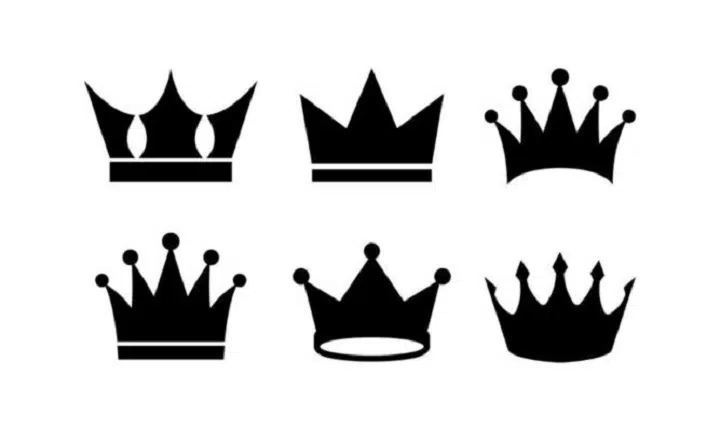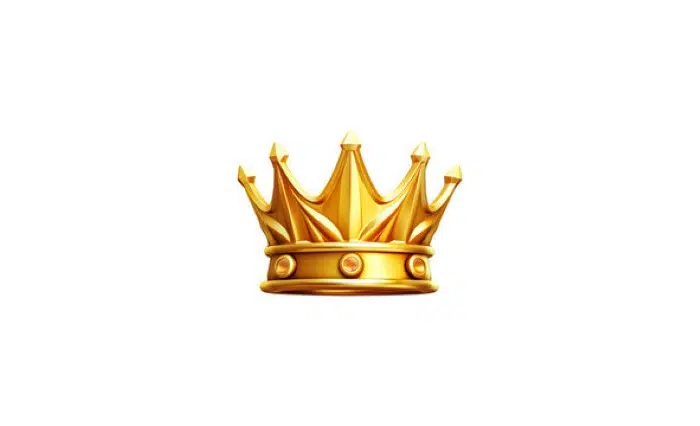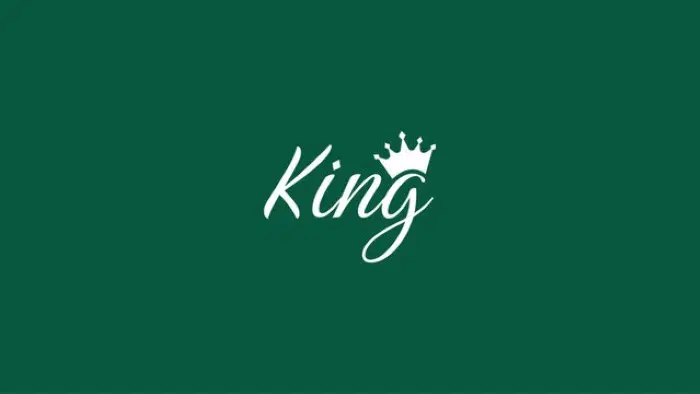Symbols are likely the most effective way by which humans communicate silently. Symbols are concise, pictorial, and unambiguous. A throne, a crown, or a chess piece can all be a king symbol, and each can have several meanings. People around the world will be curious about what the king symbol represents, how it originated, and why it remains potent in culture, art, religion, games, and even computer communication.
The king symbol is more than a single image. It can come in a crown on the heads of monarchs, the “K” chion in chess, a lion emblem, or even computer emoticons 👑. All representations mean power, authority, and leadership. The king symbol has crossed time and space, linking past, culture, and present imagination.
Interpreting the Concept of a Symbol
A symbol is a figure or mark that represents an idea greater than it. Love ♥ is represented by the heart, faith ✝ by the cross, and kingship by the crown 👑. One of the most ancient and firm symbols in the history of man is the symbol of the king since kingship itself has ever been synonymous with order, power, and prestige.
Symbols succeed because they can be easily recognized. When you notice a crown sketched on paper or on a structure, you instantly realize that it belongs to the royalty. For this reason, the king symbol succeeds worldwide.
Origins of the King Symbol
The king’s symbol has its origin in ancient times. The kings or pharaohs in Egypt used crowns as symbols of power. The gem-encrusted crowns were the pinnacle symbol of monarchy in Europe. Asian emperors used dragons, lions, or thrones as symbols of absolute monarchy.
| Symbol Form | Origin | Meaning |
| Crown | Egypt, Europe, Asia | Authority, wealth, divine right |
| Throne | Ancient Mesopotamia, China | Seat of rule and justice |
| Lion | Middle East, Africa, Europe | Courage, strength, kingship |
| Chess King | India, Persia, Europe | Strategy, leadership, survival |
Both symbols, over time, became a part of culture, and the king’s symbol became one of the most ubiquitous and admired marks on the face of the earth.
King Symbol in Religion and Spirituality
Kingship has, in most cultures, been inseparable from religion. Kings were gods or gods’ chosen ones. The crown was a sacred thing, and with it came not only the symbolism of power but also the favor of the gods.
In Christianity, Jesus Christ is also referred to as the “King of Kings.” Crown of thorns is a sacrificial king symbol of piety.
In Hinduism, kings were upholders of dharma (order) and the crown or throne symbolized cosmic duty.
In Buddhism, the lion throne symbolizes the highest authority of Buddha in instructing.
Thus, the king symbol also carries a very powerful religious and spiritual connotation.
King Symbol in Culture and Identity
The king symbol in culture has also been adopted as a symbol of pride and belonging. National symbols, coats of arms, and national flags often use crowns or lions as symbols of the monarchy. The United Kingdom, Spain, and Thailand are just a few examples where the crown remains a symbol of the monarchy.
The king symbol has also appeared in contemporary culture through music, fashion, and branding. Such as:
- The crown in rap and hip-hop culture is regarded as an emblem of superiority and success.
- Gold crown necklaces are designed by jewelry firms as status symbols.
- “King” is employed as an adjective term of respect or admiration, e.g., “King of Pop” to refer to Michael Jackson.
The symbol of the king is therefore retro and modern, observed in tradition and popular culture both.
King Symbol in Games and Entertainment
The king’s symbol is commonly used for games, especially chess. The most significant piece of chess is the piece of the king, lose that, and one loses. The crown-like form of the piece signifies its highest significance.
| Game | King Symbol Representation | Meaning |
| Chess | King piece with cross crown | Central piece, has to be guarded |
| Playing cards | King face card (K♠, K♥, K♦, K♣) | High-ranking, beside ace |
| Video games | Crown or king avatars | Power-up, leadership role |
King Symbol in Digital Media and Online Culture
In digital media and technology, the king symbol is also used in television and film to create themes of royalty, leadership, or decadence, where its broad applications in storytelling can be witnessed.
In our modern times, the king symbol also manifests in emojis, logos, and avatars. The 👑 crown emoji is employed to signify leadership, coolness, or confidence. Crown symbols are incorporated by online players into their nicknames so that they become recognized as champions.
Social media influencers also use the king symbol as a profile name or username to denote power and status. For example, a username with “King” or a crown symbol instantly gets attention as powerful and authoritative.
Using the King Symbol in Word and Text Editors
Students, writers, and graphic artists may need to insert the king symbol into text. Although there is no single “king” symbol like $, it is easy to insert crown or chess king symbols.
| Method | Steps |
| Copy-Paste | Paste ♔ (chess king) or 👑 (crown emoji) from the internet in Word |
| Insert Symbol | In Word: Insert → Symbol → More Symbols → Chess piece ♔ or crown font |
| Unicode | Use codes like 2654 (♔ White Chess King) or 1F451 (👑 Crown) + Alt + X |
| Images | Embed a PNG or JPG of the crown or throne |
This makes it easy to apply symbols of the king in school work, cultural posters, or design presentations.
King Symbol in Daily Life and Society
The king symbol is common in current life. It is used on company logos, sport team logos, and music group logos. It is used on royal palaces, structures, and coins.
| Symbol Use | Example | Meaning |
| Sports | Crown on sport team logos | Victory, dominance |
| Music | Crown in rap and pop culture | Fame, success |
| Coins | Crown imprints | Royal power |
| Fashion | Crown prints on clothes | Style, luxury |
The symbol has evolved from palaces to roads, proving its flexibility over time and society.
Why Symbols like the King Symbol are Important
The king symbol is important in that it symbolizes complex ideas in one image. It symbolizes leadership, authority, and respect all at once. People are empowered or motivated when they display or see it.
It is also an encounter with history and current life. Kings wore crowns to rule in the past, and teenagers use crown emojis to show pride now. That something that has a linkage over centuries makes the king symbol timeless.
The Psychology of the King Symbol
Psychologists believe that the king symbol works because humans identify with power. A throne or a crown automatically means leadership and authority. Humans are prone to attribute strength, protection, and respect to the symbol.
For some, the addition of the king symbol (👑) to a username or tattoo makes one bold. For some, gazing upon it symbolized in religion or in culture reminds one of justice, tradition, or god’s authority. The psychological impact is as much personal as it is shared.
Frequently Asked Questions
What is the king symbol?
It can be a crown, throne, chess king piece, or lion representing kingship, dominion, and authority.
Where does the king symbol originate?
It is passed on from ancient civilizations like Egypt, Mesopotamia, India, and Europe, where crowns and thrones represented kingship.
How do I insert the king symbol in Word?
You can paste and copy 👑 or ♔ from the web, utilize Unicode (2654 or 1F451), or insert crown images.
Why is the king symbol important?
Because it’s a symbol of power, respect, and identity by culture, religion, and online.
Is the king symbol utilized today in contemporary culture?
Yes, and it is utilized in music, athletic team symbols, emojis, fashion, and brandings throughout the world.
The king symbol is the most ancient and strong symbol in the entirety of human existence. It has been linked to crowns and thrones of old empires, chessboards, coins, and emojis but always with power, leadership, and identification.
It is utilized in typing in Word and online use by Unicode, copy-paste, or images. In culture, it is utilized in music, sports, and logos of brands. It brings respect, authority, and pride in psychology.
The symbol of the king captures how straightforward design unites history, spirituality, and current identity. It is not merely a photograph, it is a symbol of leadership, oneness, and global human imagination.



